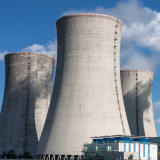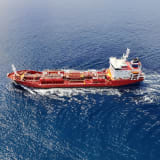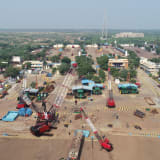Research
16/10/23
What does the Panama Canal and dam-based hydropower production have in common?

Potentially quite a bit, if you’re into lateral thinking.
Every time the valves open in the uppermost canal lock – filling the chamber with 100,000 m3 of Gatun Lake freshwater in the case of the old locks – this represents an irreversible use of that volume of water – much like releasing water through a pipe for downstream power production or leading excess water through the flood gates of a hydropower dam. The water then generates a revenue stream equal to the Canal fees generated for the ship transits “using” that water – the only difference from hydropower production really being that the revenue is “lumpy” rather than a result of continuous energy production.
What happens in an environment of low dam/lake levels? Well, as Scandinavian power consumers found out to the detriment of their wallets last winter, the “water value” – effectively the opportunity cost of using the water in the reservoir in the future rather than now is increasing, which leads economically rational power operators to be more stingy with production.
The issue for the Panama Canal Authority at the moment is surprisingly similar: How do you maximize the future revenue of the Gatun lake water subject to uncertain (but possibly still too low) future precipitation and lake inflows?
Well, you take steps to limit water usage (limit transits) and change the mix of ships transiting to maximize (roughly speaking) the volume of cargo space per cubic meter of water used. As it turns out, the ship types that maximize the latter – such as larger container vessels – also happens to have the greatest willingness to pay for canal transits through pre-bookings and auctions as the value of their cargo (and therefore the value of time) is high.
The least attractive “customers” from this point of view ends up being the smaller bulkers with relatively low-value cargo and comparatively low cargo space but the same water usage per transit as a bigger vessel using the same set of locks.
All told, then, while we are used to the Panama Canal being infrastructure that is available to all on an equal basis, climate changes and the resulting limitations on water usage, will change the calculations – quite possibly for a long time.
By Roar Adland, Global Head of Research, SSY
Articles
You may also be
interested in
View allGet in touch
Contact us today to find out how our expert team can support your business















